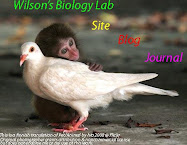Recently scientists have been preforming a multitude of more thorough tests on a hominid skeleton found in Indonesia, nicknamed the “Hobbit” because of it’s small size. The skeleton was found on the island of Flores, at a archeological site called Liang Bua. Scientists have identified the remains as those of a female, living approximately 17,000 years ago. The early hominid, know by scientists as LB1, is comparatively a dwarf, standing at just over a meter tall. Careful observations have shown that LB1 had a brain roughly 2/3 the size of a modern human’s.
LB1 is a very interesting from an evolutionary perspective. The remains show that LB1 had many ape-like body variations, but it also had many human-like features. The brain, was about the size of a chimpanzee’s brain, but had features that increased it’s cognitive ability. CT scans preformed on the skull showed that the brain cavity had an enlarged Broadmann area 10. This is the part of the brain that allows complex thought processes such as those required to make tools. This allowed a hominid with a brain the size of a chimpanzee’s to be far more advanced and similar to modern humans. LB1 supports a belief about certain organisms. The belief is that organisms living in environments with limited resources will decrease in size. This has already been supported with other organisms, but now is maybe true in early hominids.
Many critics of this idea suggest that LB1 was the result of a disease. This would make sense because fossil evidence has show that at the same time, there were other hominids that were more advanced, and more closely related to modern humans. However, there is evidence that disproves the idea that LB1 is just a sick modern human. The wrist of LB1 is very similar to that of an African ape. In modern humans, the wrist bone, called the trapezoid, is shaped like a boot. But the trapezoid of LB1 is shaped like a pyramid. The partial skeleton of LB1 provides critical information for scientists trying to under stand how the process of natural selection and evolution work.
By Will Mairs, Cindy Cochran, and Matthew Winter
Original article Rethinking "Hobbits": What They Mean for Human Evolution, from the November issue of Scientific American.





Very good article, but the evidence is inconclusive if it is a mutation or a branch offed species.
ReplyDeleteI somewhat agree with James. I do agree that there is inconclusive evidence relating to the fact if it is a new species or not. However, I would like to point out that it could have been caused by a disease that effected the two humans that were found, though the chances of this are quite unlikely.
ReplyDeleteMore evidence is needed; the different wrist shape could have been a deformity.
ReplyDeleteThese people could have been a species that was not as evolved and equipped as other human-like species. Maybe that is why there were so few of them and why they dies off. But, it is possible that they were really well adapted but we don't the evidence to prove either.
ReplyDeleteI disagree with Calvin. To be that short it would already have to have had a mutation and the different shaped wrist would mean another one. Mutations are extremely rare occurrences and two at one time would be highly unlikely. Although the evidence is not 100% conclusive, it seems highly improbable for it not to be a seperate species.
ReplyDeleteThis is intriguing! Unfortunately, I am having problems believing it. There just isn't enough good evidence.
ReplyDeleteI agree with all of the comments. I think it is a brilliant discovery but the only way for someone to think it was possible would by finding hard evidence.
ReplyDeleteThis is interesting but it could have deffinately been chance of mutations.
ReplyDeleteI think it could have just been a mutation from a human. There are a lot of similarities in the bone structure and DNA so I think it is mutated human
ReplyDeleteHow come people based their idea's without alot of evidence?
ReplyDelete